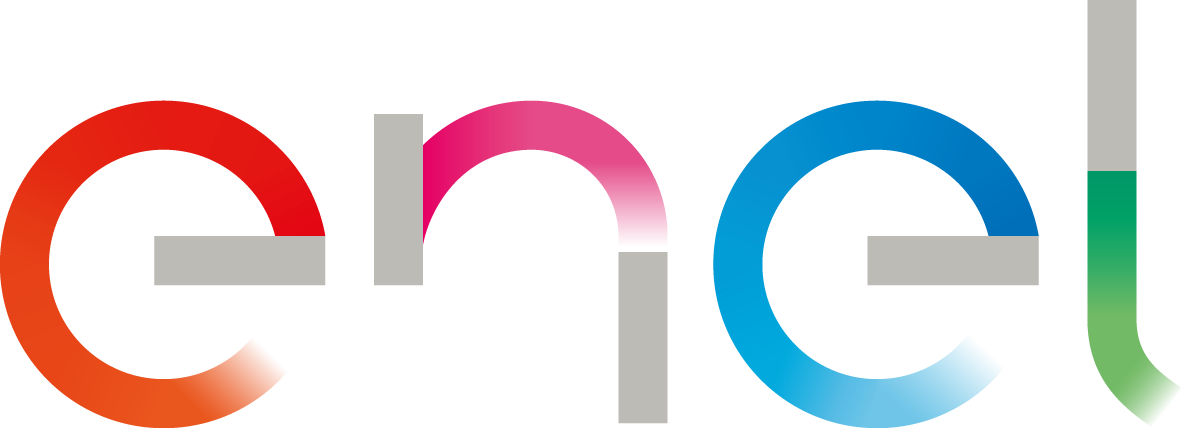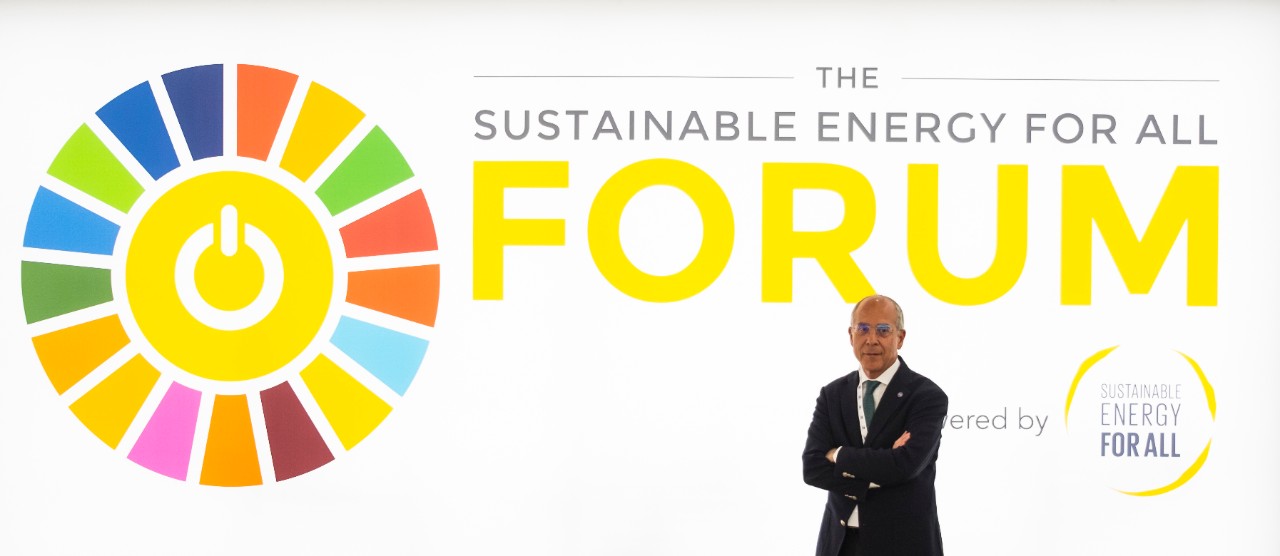Environmental, social and economic sustainability are crucial for growth in the energy sector, and that’s why Enel has made sustainability one of the key pillars of its corporate culture. As well as establishing a new partnership agreement with Sustainable Energy for All (SEforALL), the Group is a renewable energy world leader and has committed to contribute towards four of the United Nations’ 17 Sustainable Development Goals (SDGs) including decarbonising its energy production by 2050. Enel is also breathing new life into 23 conventional power plants in Italy by working with local communities and institutions to find new uses for facilities that with the rise of renewables and overcapacity in Europe have come to the end of their useful lives as thermal power stations.
SUSTAINABLE ENERGY FOR ALL PARTNERSHIP
The Group’s most recent move is to sign a partnership agreement with Sustainable Energy for All (SEforALL), a global initiative led by the UN Secretary-General to achieve universal access to affordable, reliable, and modern energy services and to double both the improvement rate of energy efficiency and use of renewable energy by 2030.
More than one billion people in the world today have no access to electricity, and nearly three times that number depend for cooking on solid fuels, whose smoke is killing more than four million people a year.
The partnership will see Enel work to support the United Nations Secretary General and SEforALL in enhancing efforts to see further electrification ensure universal access to affordable, reliable and modern energy services in the context of the Paris Agreement. It will establish cross-industry discussion of integrating on- and off-grid electrification with a view to creating a SEforALL Electrification Accelerator, which will see Enel work with an institutional partner and SEforALL to provide its expertise and drive development of mini-grids, e-mobility and digitisation of networks. The partnership also provides for the exploration opportunities for Enel to join existing SEforALL accelerators and other partnerships.
UNITED NATIONS SUSTAINABLE DEVELOPMENT GOALS
At the United Nations Sustainable Development Summit 2015, Enel CEO Francesco Starace announced the Group’s intention to contribute to four of the UN’s 17 SDGs, created as part of the UN’s 2030 Agenda for Sustainable Development, which envisages a world free of poverty, hunger and disease, in which human rights and gender equality are universally respected:
SDG 13 – Climate action
SDG 7 – Affordable and clean energy
SDG 4 – Quality education
SDG 8 – Decent work and economic growth
Enel is doing this in part through its commitment to decarbonise the energy mix by 2050 (SDG 13). The Group in 2016 has made substantial progress towards this goal by closing the year with 395 grams of carbon dioxide per kilowatt-hour equivalent en route towards its mid-term target of less than 350 g CO2/KWheq by 2020.
Enel has also reached 300,000 beneficiaries for SDG 4 (75% of its target of 400,000), 1.2 million beneficiaries for SDG 7 (40% of a 3 million target) and 1.1 million beneficiaries for SDG 8 (70% of the upgraded target of 1.5 million).
Some of the projects include the off-grid, hybrid PV solar/wind power system installed at the remote Chilean village of Ollagüe the Community and IT Hub set up near the Group’s Nojoli wind farm in South Africa, the Ecoenel recycling/electricity bill discount initiative in Brazil and the work carried out against fuel poverty in Iberia.
The Ollagüe facility contains 250 kW solar and 30 kW wind plants combined with a storage system, offering the local population clean energy 24/7 and benefitting 1,200 people. Innovative technologies have been adopted at the site, such as the use of wind turbines with vertical blades and batteries in molten salts, which guarantee operation in areas of high irradiation and rarefied air. The involvement of the local community at every stage of the project was carried out through a public and private partnership that brought closer municipalities and local communities with academia and other international partners such as the Barefoot College, which trains women in isolated rural communities to be solar engineers and maintain mini solar power plants.
In 2016 the IT hubs near the Nojoli facility have given around 4,000 local people access to computers, internet, printers, scanners and faxes. The hub can be used to double up as an IT training centre, while a person from the local community carries out maintenance of the hub. Ecoenel has benefitted nearly 30,000 people in the Brazilian states of Rio de Janeiro and Ceará in 2016 by offering them discounts on their electricity bills for recycling their waste. Since its implementation, the programme has benefitted over 600,000 customers, collected 32,000 tonnes of waste and offered more than 5 million Brazilian reais in energy bill discounts.
Through its Spanish subsidiary Endesa, Enel has helped vulnerable families at risk of being cut off keep their electricity connections, signing 166 agreements with municipalities, autonomous communities and public and private institutions that cover more than 10 million households in 26 Spanish municipalities and 21.3 million people. It does this by postponing payment of bills, without adding any interest or extra costs for the consumer. In 2016 it stopped 6,569 families from being cut off, managing more than 19,600 bills amounting to over 1.7 million euros.
RENEWABLE ENERGY
Enel’s green energy division Enel Green Power is the world’s number one multinational renewable energy player, managing around 36 GW of wind, solar, geothermal, biomass and hydropower capacity in Europe, the Americas, Asia and Africa. Last year Enel built 2 GW of new capacity, and of the 5.9 billion euros of growth capex invested by the Group in 2016, almost 4 billion euros was in renewable energy, an increase of 47%. Three quarters of last year’s 478 million year-on-year increase in growth EBITDA came from renewables, while 3.1 billion euros (46%) of the 6.9 billion euros of 2017-19 growth capex already in execution refers to green energy.
Enel will also continue to invest in new renewables capacity. This will be done both through organic growth by developing 3.5GW and through its recently adopted build, sell and operate (BSO) model, which will see the Group sell but continue to manage green energy facilities, crystallising upfront part of our construction pipeline’s value and further enabling investment. By the end of 2019 Enel plans to build 3.2 GW of renewable projects under the BSO, half of which are already in execution.
Enel is present in the American renewable energy sector through Enel Green Power North America, which has more than 3.2 GW of managed capacity in 23 US states and two Canadian provinces spread across four different renewable energy technologies: wind, solar, geothermal and hydropower.
FUTUR-E
With climate change at the top of the global political agenda, renewable energy on the rise and overcapacity affecting energy markets across Europe, utilities in the region have found themselves stuck with conventional power stations that they have had to mothball. In recent years renewables have begun to account for 40% of Italy’s energy demand, with the introduction of smart grids and meters also having led to more efficient energy management. This has meant that many of Enel’s conventional plants are shut down for large parts of the year, and in April 2015 Enel decided to act on this by creating the Futur-E project, through which it is working to convert 23 of its thermal power plants in Italy within the next five years.
Through Futur-E, Enel is in the process of decommissioning nearly 13 GW of installed conventional capacity from all over the country, of which approximately 11 GW have already been decommissioned – enough to power places such as Singapore or Hong Kong, or half of the installed capacity of Greece. Some sites will be put to use in other sectors in a similar manner to the Tate Modern, the world famous London art gallery that found its home in the old Bankside oil-fired power station. Some can be converted to another generation technology, while for others Enel will sound out third parties in order to ensure that the sites can continue to make a valid contribution to the local area.


